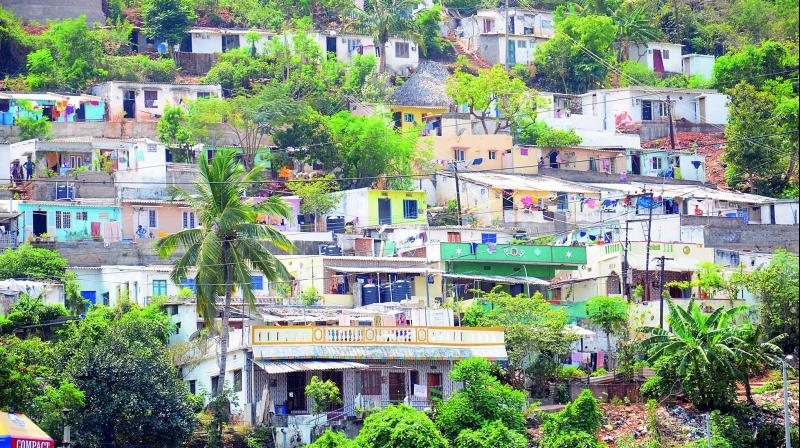Visakhapatnam: Houses on foothills vulnerable to landslips
Study suggests split-level foundation to prevent catastrophe.

Visakhapatnam: The rising number of encroachments on the hills and unchecked construction activity had eaten into most of the greenery and altered the geological structure of the hills in Visakhapatnam over the last two decades. A brief drive around the city gives a glimpse into how thousands of houses have lined up the hills in and around Gajuwaka, Marripalem, Kancharapalem, Thati-chetlapalem, Simhachalam, Hanumanthawaka, Pendurthi, Arilova, and other parts of the city.
A study carried out by an Andhra University professor and a retired chief engineer of Vuda found that the unscientific construction of houses on the hills of Visakhapatnam and the subsequent deforestation made them highly vulnerable to the landslides. The wedge failure of rock slopes and increasing topographical alterations around the hills also put them at risk for the soil creeping or rockfall. After all these changes, a prolonged spell of rainfall is sufficient to trigger a landslip.
Explaining about their study, Prof. P. Jagadeeswara Rao, a professor at the Department of Geo-Engineering of Andhra University and Dr. Ch.V. Ramarao, a retired chief engineer of Vuda, said; “Unfortunately, the local geological conditions or other factors related to that particular area have never been considered before constructing these constructions on hills in Vizag. Our study, which covered the entire GVMC limits, mainly focused on delineating vulnerable areas to landsliding and suggesting remedial measures. Various techniques of terrain evaluation have been used to decipher the terrain characteristics and its suitability for various constructions. Soil physical parameters, shear strength, density and soil bearing capacity have also been assessed as part of the study.”
Prof. Rao and Dr. Ramarao came up with the suggestion of constructing the split-level foundation for each household, comprising of retaining wall with weep holes, gabion boundary wall, saucer drains, etc. “Before constructing any house, the soil bearing capacity needs to be taken into consideration, which defines the ultimate load that the soil can sustain. All these measures can help prevent the catastrophe from happening in the city. Afforestation is the need of the hour to prevent the landslips,” Prof. Rao and Dr. Ramarao added. The study suggested of getting the plan of that particular household certified by a certified civil engineer or architect. This study ‘an integrated study on terrain evaluation to mitigate landslide/slope movement in GVMC” earned Mr. Ramarao a doctorate.

